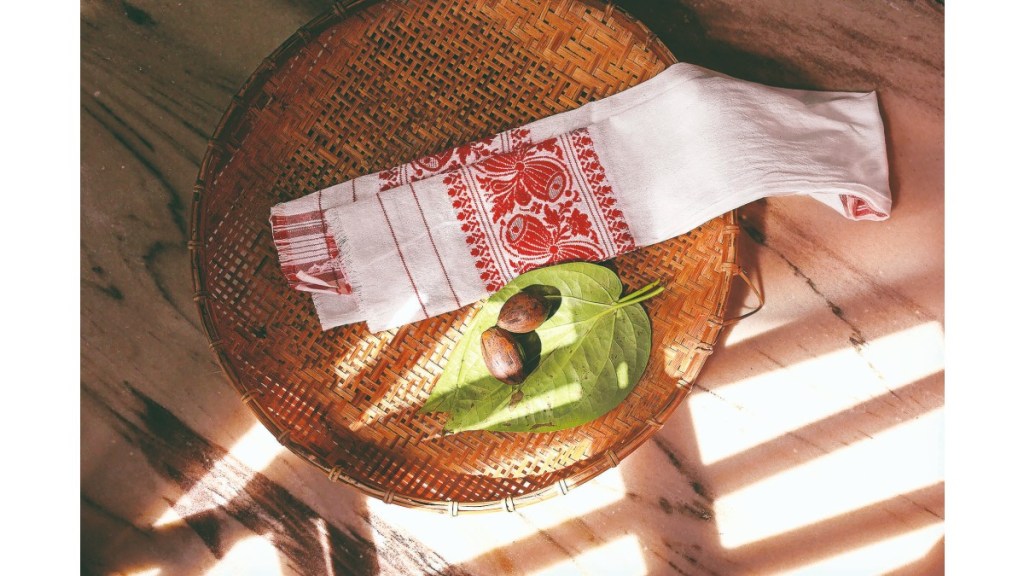Jaya Jaitly calls a gamchha the “Swiss Army knife” of fabrics because it has around 25 known uses. “It is everywhere, yet no one notices it. Neither an exotic Kanjeevaram, nor a feted Banarasi silk, the gamchha is Rs 50 worth of an ordinary fabric that we see, yet unsee. I hope it finds the dignity it deserves,” says the president of Dastkari Haat Samiti.
The versatile use of the fabric is more than just a cloth. It’s a symbol of simplicity, resilience, and cultural pride in India, that has been utilised as a fishing net, a vegetable bag and makeshift belt in rural Bengal. In Bihar, it is an offering to the river goddess, while in Assam the pristine white gamosa is a symbol of respect. Gamchha has wiped the sweat of labourers and farmers, and served as a towel.
Since Jaitly’s engagement with the fabric began in 2015, when she commissioned the women weavers in Phulia, West Bengal, to create 100 gamchha sarees, this time, she brings the essence of the common man’s cloth in a multimedia exhibition titled Gamchha: From the Ordinary to the Extraordinary, presented at the National Crafts Museum & Hastkala Academy in Delhi.
With a display of over 250 forms of gamchhas from 14 states across India, and southeast Asian countries, the collection symbolises the widespread cultural relevance of gamchhas across the country, wherever historical need has supported their production and use. The core idea of the show is to highlight its regional diversity, unique craftsmanship, cultural symbolism and often-overlooked presence in today’s Indian society, besides including art installations, design interventions and live demonstrations, exploring the fabric’s many uses.
“I wouldn’t immediately suggest that all gamchhas be bought and cut up for things like oven gloves or jewellery, although that’s certainly possible and even desirable to some extent. But we need to ensure the use is widespread enough to support weavers’ livelihoods. Sometimes, the only market for these weavers is labourers,” Jaitly tells FE.
If the tradition is kept alive, even though the fabric is cheap, comfortable, and healthy for labourers to use for various purposes, gamchha has been reimagined by fashion brands including 145 East, Gaba, and péro in their designs. The Prime Minister of India has worn the gamosa during Covid lockdown, while the cast of Gangs of Wasseypur wore gamchhas for the film’s red carpet premiere.
But more than the display, Jaitly clarifies that this exhibition is a crucial intervention at a time when traditional textiles face extinction from mass production and cheap imports. “It would be a shame indeed for both the Indian weaver and wearer to lose the gamchha to mass industrial production or cheap imports. We shouldn’t take away the labourers’ market. We need to keep the gamchha tradition alive so it can be used in other ways. It’s starting to appear in some fashion brands, but I want to avoid drawing attention away from the original weavers. Otherwise, the issue of class difference arises, and I don’t want that to be part of our work,” says Jaitly, who, along with architect Suparna Bhalla, the founder of Abaxial Design, also the curator of the show, has conceptualised and designed the exhibition.
Gamchha: From the Ordinary to the Extraordinary is on display till March 10 at the National Crafts Museum and Hastkala Academy, Bhairon Marg, Pragati Maidan, New Delhi









